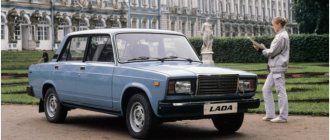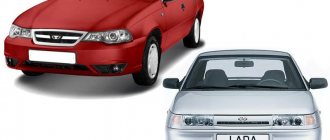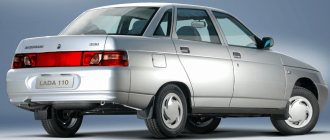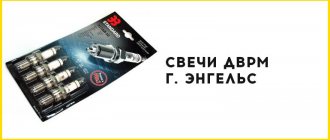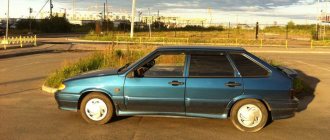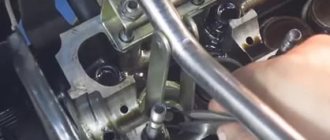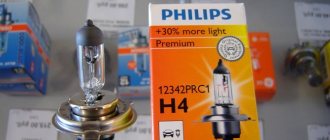Models VAZ-2110, and equally 2115, have proven themselves well during operation. Today, their production has been discontinued, and therefore those who wish will be able to purchase only a used car. The mentioned Lada models were produced around the same period, and therefore are similar in many ways. The demand for the 10th and 15th models is due to their low cost, ease of maintenance and availability of inexpensive spare parts. Often one of the cars becomes the first for a novice driver, and they often have the question: which one is better to buy? You will be able to make an informed choice after reading this article.
Suspension and ride comfort
The design of the struts and shock absorbers on these two models is almost identical, so you won’t be able to feel a significant difference, but at high speeds when turning, the tenth model behaves much more confidently than the 2114, this is due to a more rigid body, which many owners appreciated. The seats of the VAZ-2110 are quite comfortable, and it’s easier to travel a long way in them, since your back will be much less tired.
If we consider the issue of safety, then the VAZ-2110 has an advantage. According to the results of the frontal crash test, it turned out that the “ten” has a strong interior strength structure. Powerful pipes are welded into the front doors, which, in the event of a frontal impact, act as spacers, seat belts and latches, also at a high level. The VAZ-2114 cannot boast of this. Upon impact, the new bumper, in the place of which there used to be an aluminum beam, will completely shatter, which, naturally, will affect the driver and passenger located near him.
Salon and its contents
In addition to the body, the interior has also been updated, and in particular the usability of instruments and control keys has improved. Depending on the configuration, the shape of the torpedo changed, which is quite surprising. In the basic and medium versions, the dashboard opposite the passenger was flat, but in the “luxury” category there was a convenient niche for things. A nice addition to the new torpedo was good assembly - the panel was fastened well, there were no backlashes and there were no unnecessary squeaks, rattles or other rarefaction sounds when driving. It is worth noting that this car has an on-board computer with a fairly fast processor; it performs all the necessary functions at 5/5.
The steering wheel can be adjusted according to the angle of inclination, which is a bit surprising for our car industry; there is a large “emergency light” button on the steering column, it’s hard not to get hit. The basic configuration provides only mechanical windows, but starting from the middle level, the driver and passenger can use electric windows.
In standard and medium configurations, they use inexpensive fabric and fillings; you can’t do without covers; they can’t stand abrasions. But the “Lux” equipment pleases with velor upholstery of the seat and door panels.
VAZ 2110
Belongs to the AvtoVAZ JSC family of cars, produced from 1995 to 2009. It has front-wheel drive, manual transmission. The first models were equipped with a carburetor type engine, later they installed an electronic engine control system. New systems and equipment were also installed, improved body painting technology was used, and performance indicators were improved.
Even the cheapest modifications require bumpers to be painted to match the body color. To increase corrosion resistance, it was decided to use galvanized steel. The drag coefficient was also reduced, thereby reducing fuel consumption.
Basic equipment includes:
- Ventilation of brake pads.
- Watch.
- Electric rear window defroster.
- Electric door locking.
- On-board control system display unit.
- Electronic device that protects against theft.
- Individual lighting lamp.
- Exterior mirrors.
- Fabric seat covering.
- Luggage compartment upholstery.
- Safety bars on the front doors.
- Inertia seat belts front and rear.
- Color of your choice (metallic/white).
More expensive configurations included alloy wheels, air conditioning, a driver's airbag, a heating system for the front seats, electric drive functions and heated exterior mirrors. Fog lights and velor seat upholstery were also installed.
Why you should look at a used 2110 - important advantages
To this day, the main advantage of the model remains its relatively low price. Of course, there are no models on the market younger than 2008; simple engines do not add any special advantages to the purchase. Nevertheless, the machine has enough advantages. This is a practical and very inexpensive car to maintain, spare parts for which can be purchased at every car store and market. There are a lot of spare parts, there are good analogues and originals. Among the benefits of purchasing this model are also the following features:
- quite adequate quality, if the car was not killed before you, the main components and assemblies serve without any problems up to 250-300 thousand kilometers, this is a long time for any modern car;
- tolerable comfort, if you don’t expect much from the car, a smooth ride will ensure timely maintenance, replacement of struts at the right time, compliance with load restrictions;
- durable materials - although there are no expensive soft plastics here, the interior elements last much longer than you can imagine, the car resists wear;
- relatively low consumption - you can keep within 7 liters per 100 km in the combined cycle, if you drive carefully and do not put too much pressure on the trigger, on the highway fuel consumption is even more pleasing;
- no problems with the engine, almost all engines work well, there are 1.5 and 1.6 liters, both have versions of 8 and 16 valves, there is not much power, but the dynamics are not the worst.
In addition to all the advantages of the car, you can add its low fuel requirements, a fairly large trunk and ease of operation. Despite all the post-Soviet qualities of this car, you can find many advantages in it. But the main ones are, of course, associated with a very affordable price tag. That's why the car is still popular today. Let's look at how to choose a more or less lively “Ten” in the car market.
What's better, ten or fifteen?
#1 Romario-23
Surely the owners of one of this cars did not have an easy choice when purchasing. “Ten” or “Fifteen” so why did you choose this one?
Which of these cars is better suited for a student as a first car?
#2 Ramon
Surely the owners of one of this cars did not have an easy choice when purchasing. “Ten” or “Fifteen” so why did you choose this one?
Which of these cars is better suited for a student as a first car?
I didn’t have a choice, ten was better, the extra money was enough.
#3 Romario-23
Technical characteristics of VAZ 2110 and VAZ 2114
When comparing two vehicles, it is necessary to compare their technical characteristics.
| Options | 2110 | 2114 |
| Length, mm | 4 265 | 4 122 |
| Width, mm | 1 680 | 1 650 |
| Height, mm | 1 420 | 1 402 |
| Ground clearance, mm | 170 | 160/165 |
| Front track, mm | 1 400 | 1 400 |
| Rear track, mm | 1 370 | 1 370 |
| Wheelbase, mm | 2 492 | 2 460 |
| Weight, kg | 1 060 | 985 |
| Trunk volume, l | 450 | 330/600 |
As can be seen from the table, the “ten” is longer, higher and significantly heavier than its opponent. The wheelbase of the VAZ 2110 exceeds that of the VAZ 2114 by 32 mm. The tenth model loses only in the volume of the luggage compartment, which, alas, cannot be increased.
Trunk of VAZ 2114
As for the carrying capacity of vehicles, the sedan is again the leader here - 475 kg versus 425 kg for the hatchback.
Comparison results
When choosing between these two cars, you need to realize that they are almost similar, except for some nuances, the vehicles are quite reliable and easy to operate. If preference is given to a comfortable ride with a smooth ride, then you should take the “ten”.
When choosing speed and handling, you should consider buying the 2115, its handling will be a pleasure. Still, the choice will be influenced more by the personal preferences of the car enthusiast than by any individual characteristics.
Sources
- vchemraznica.ru/chto-luchshe-kupit-vaz-2110-ili-vaz-2115/
- ladaprofi.ru/novosti/chto-luchshe-kupit-vaz-2110-ili-vaz-2115.html
- zen.yandex.ru/media/zatonevkredit/avtomobil-za-100-000-rublei-vaz-2110-ili-vaz-2115-vybiraem-chto-luchshe-vziat-5c7b7cca595e2100affc2216
- drom.ru/compare/lada-2110-vs-lada-2115.html
Main differences and comparison of cars
At first glance, it is not so easy to find the differences between these two domestic cars. This is understandable, since the VAZ-2114 replaced the VAZ-2109 as a modernized, improved version of its predecessor. This is not a transition to a completely new model. Nowadays such transformations are usually called restyling. The VAZ-2114 does not reach the level of a new generation car, since it has too much in common with the “nine”. The car is different, but in less significant parameters, according to experts and motorists. But you can compare the VAZ-2114 and 2109. If you carefully study the features of the two cars produced by the Russian company, you will understand how they differ from each other.
Having compared the VAZ-2109 and VAZ-2114, we come to the following conclusions:
- The new version of the “nine”, called VAZ-2114, has undergone changes inside and out. New headlights appeared on the body, a new lining was made on the radiator grille, and the front bumper and hood were somewhat modernized. Also on the fourteenth model, stylish and fashionable moldings were installed at that time.
- The VAZ-2109 or simply “nine” boasts an indestructible, practically invulnerable front bumper. But when developing the fourteenth VAZ, engineers lost sight of this component, as a result of which the predecessor’s bumper is considered better than that of its successor.
- Serious changes affected the front panel, if we move on to the internal equipment of the VAZ-2114. The new control panel has been adapted to European standards. Because the inside of the car looks more attractive, everything looks concise, logical and stylish. But the “nine” retained the Soviet-style panel, which has neither style nor any intelligible logic. They installed everything that was required for the car, but the engineers and designers didn’t think much about how they installed it. The main thing is that it is.
- VAZ-2114 was electrified. The primary innovation was the installation of electric front windows. Finally, the owners of domestic cars felt what it was like not to turn the oars, but to raise and lower the window by simply pressing a button.
- The heir to the legendary “nine” tried to outdo its predecessor and attract more audience by installing a new steering wheel and an adjustable steering column. Although in terms of the steering wheel, the engineers did not come up with anything new, but simply borrowed this element from another VAZ. Namely, the VAZ-2110, or simply “tens”.
- Internal changes to the fourteenth model made the interior more modern, interesting and functional. Although fans of the old school believe that the interior of the “nine” was more reliable. This is rather a matter of habit, since a modern person wants to get at least some relevant automotive benefits. In this component, 2114 is noticeably ahead of 2109.
- The engine compartment has also been modernized. Eight-valve gasoline engines with four cylinders were installed on the “nines” from the factory. Depending on the configuration, the client could order a power unit with a volume of 1.1, 1.3 and 1.5 liters. Nothing bad can be said about the engines, but these are frankly outdated engines. No more. In the case of the fourteenth model, new engines began to be installed. To be more precise, there was initially only one engine, borrowed from the “nine”. The line of engines featured only a 1.5-liter power unit. But then the developers took into account their mistake, as a result of which they added a 1.6-liter gasoline 16-valve engine to choose from.
These are the main distinctive features with which you can compare two Russian-made cars. It's important to understand that both cars are workhorses and not luxury or luxury cars. If you need a high level of convenience, modern equipment, air conditioning, airbags of various types, then these cars are clearly not for you
Model 2115
Samara is also a front-axle sedan produced by VAZ. In fact, the car became an updated version of model 21099. During the restyling process, the feed was radically changed. New ones have appeared here:
- luggage door;
- lanterns;
- spoiler with additional brake light.
The front end also did not escape updating - the designers adjusted the hood and fenders. More modern optics were installed on the car. At the same time, the bumper began to be painted to match the body, and the doors were equipped with decorative moldings. The changes also affected the electrical circuit (some components and instruments were added), as well as the interior.
Production of 2115 ended in 2012, when the Volzhsky Automobile Plant mastered the production of Grants.
Dimensions of the VAZ model in question:
- body height – 1420 mm;
- length – 4330;
- width – 1650.
The wheelbase size is noticeably smaller than that of the “ten” - it is 2460, but the trunk volume is exactly the same (450 liters). Samara became 10 kilograms lighter and received a higher ground clearance - 17 cm.
Despite the fact that the fuel tank remained the same size, the engine for the basic version turned out to be even weaker than that of the 2110 - 70 horsepower. Nevertheless, the maximum speed increased to 180 km, but acceleration to hundreds increased to 13.2 seconds.
The car also fits 5 people, and they will be much more cramped here than in the “ten”.
Main characteristics of 2110
The model in question is a front-wheel drive sedan with four doors. Its serial production started back in 1995. In fact, the car became a transitional link between the classic, beloved by many, “Zhiguli”, and the first sign of the new generation – Samara.
Unlike previous products of the Volzhsky Automobile Plant, produced back in Soviet times, the “ten” came out more modern and received, in particular, a hydraulic power steering. Additionally, VAZ has provided the possibility of equipping the Lada with a control unit. In some trim levels (above the base), electric windows have become available.
The car itself was finally discontinued in 2009 - it was then that the company switched to producing the Priora, created precisely on the basis of the 2110.
The vehicle dimensions are as follows:
- length – 4265 millimeters;
- width – 1680;
- body height – 1420.
The wheelbase size is 2492 mm.
Besides:
- the “ten” has a relatively high ground clearance (16.5 cm) and a weight of 1020 kilograms;
- The trunk of the medium-capacity model has a volume of 450 liters;
- The fuel tank holds 43 liters of 92 gasoline.
The car's power unit is not particularly powerful. A 73 hp engine was installed in the basic configuration. With.
The gearbox is 5-band, domestic and purely mechanical. The unit is quite imperfect - it knocks, is loose and does not work clearly.
The tenth model is capable of reaching a maximum speed of 165 kilometers. Acceleration to hundreds takes her 12.3 seconds. On average, a car spends 9 liters of gasoline per 100 km. The 2110's cabin seats 5 people, but the back seat will be quite cramped.
VAZ-2110 and 2115 - differences
The VAZ model 2110 has a fairly low drag coefficient, which means that aerodynamics will save some gasoline. However, the speed indicator of 2115 is higher.
The body of the “ten” is distinguished by rounded shapes, and the wheel arches are hidden under it, which allows you to get rid of the splashes of dirt that constantly decorate the “15” in bad weather. On the 2110, approximately half of the body elements are additionally coated with zinc, which means they have more advanced protection against rust.
The hood of this model is wider and weighs more, because a layer of sound insulation is installed on it. It is fixed in the raised position with gas stops, whereas on Samara a regular rod is installed, just like on the classic.
Good gaskets are installed under the 2110 engine, which significantly reduce vibration levels.
There are also several nuances regarding the interior. As the owners of Samara note, it is very difficult to get inside without getting your clothes dirty in the mud. The problem is that the car has very low sills, which constantly get dirt. Tens do not have such a drawback - there is a special seal here.
What do 2115 and 2110 have in common?
As you can easily see, the dimensions of both cars are approximately equal.
Moreover, the 10th model is wider, and the 15th is longer. The trunks have equal volume. The technical equipment, as well as the set of electrical equipment, are largely similar. In both cases, the door opening of the storage compartment is wide and makes it easy to load and remove very large loads.
The machines also have:
- good ECUs for their time;
- comparable motor power;
- identical fuel consumption.
If we talk about salons, then they are not much different. The finishing is made of cheap, creaky plastic and textiles of moderate quality. At the same time, the Samara’s instrument panel is more modern, whereas on the 10th model it looks almost classic.
Neither 2115 nor 2110 have such gadgets as:
- auto-locking system;
- air conditioner;
- heated seats, etc.
At the same time, it should be taken into account that since cars are now sold exclusively on the secondary market, their equipment may differ significantly from the factory one, because tuning is a favorite pastime for many owners.
What to choose?
Much in this matter depends on the degree of conservatism or optimism of a particular consumer. The cars themselves are very similar in technical characteristics and at the same time very different in the structural elements of the body, interior and appearance. The appearance of the “ten” is more modern and harmonious for the present time. “Nines” are distinguished by a more utilitarian, familiar appearance.
Those who value appearance and a higher level of comfort should opt for cars from the tenth family. In this case, preference should be given to cars with a 16-valve VAZ-21124 engine. The cost of such a car in good condition will be 30-50 thousand rubles higher than the cost of a “nine” of similar configuration and year of manufacture. The above benefits are worth the price difference.
For those who like dynamic and maneuverable driving on the highway and in the city, the VAZ-2109 with the VAZ-2111 injection engine is better suited. This car is also good for traveling along country and forest roads.
As a second car for infrequent trips on business, it is best to purchase a “nine” with a VAZ-21083 carburetor engine. These machines are famous for their unpretentiousness, reliability and maintainability. A convenient transformable interior with loading through a large rear doorway best meets the needs of a villager, hunter, fisherman, and outdoor enthusiast.
Source
The main disadvantages of the VAZ 2110 Sedan
- Timing system;
- Cabin heater;
- Suspension;
- Cooling system;
- Generator;
- Door locks;
- Door switches;
- Door handles;
- Starter;
- Brakes.
Let's look at them in more detail:
- Timing system.
The main weak point of this car is its gas distribution system. The timing belt requires special attention (especially on 16-valve engines), because due to the design features of the car and the constant exposure of oil to it through bad crankshaft and camshaft seals, it quickly becomes unusable. If you do not pay due attention to this, a broken belt can lead to serious repairs to the entire engine.
- Cabin heater.
Many owners of this car talk about frequent stove malfunctions. This manifests itself at different mileages and under different operating conditions, so there is no clear pattern for the occurrence of this problem. Usually, at about 100 thousand miles, the heater motor stops responding to commands, and the cost of replacing it will be approximately 1,500 rubles.
It also happens that the heater radiator begins to leak at the same mileage. The cost of eliminating such a breakdown will cost approximately 2,000 rubles.
- Suspension.
Although the suspension is designed for bad roads, it is not always able to survive certain sections of it. By the time a mileage reaches 50 thousand, steering ends and ball joints may “ask” for replacement, and silent blocks rarely reach 100 thousand.
- Cooling system.
This part of the car needs to be closely and frequently monitored, especially with mileages of more than 150 thousand, because leaks of coolant from the radiator and various pipes can cause the engine to overheat, and this is no joke.
- Generator.
On a run of 100 thousand km. The brushes may need to be replaced (repairs will cost 500 rubles). It happens less often when the winding fails during this run, which will require more serious intervention and greater financial costs.
- Door locks.
Operating problems also include constant problems with door locks, which makes opening or closing the car a daunting task. The problem is solved with little effort and for only a few hundred rubles, but it still requires attention.
- Door switches.
Due to the constant ingress of water into the door switches, the next weakness of this machine appears. Due to accumulated moisture, they often stop working normally, which leads to the interior lights not turning on or off when opening/closing the doors. The problem is solved by simply cleaning the mechanism or completely replacing it.
- Door handles.
It often happens that getting into or out of a car becomes a big task. This is all due to poor quality door handles and their loose fit to the door, which causes moisture to accumulate inside and it begins to rust. As in the previous case, this disease can be solved by cleaning and lubricating the mechanism, or replacing it. Fortunately, the cost of the door handle is very reasonable.
- Starter.
At mileages of more than 150 thousand, sometimes the so-called. “nickels” inside the starter, which leads to its inability to start the engine. The defect can be cured by replacing the starter or completely rebuilding it.
- Brakes.
Another common breakdown of this car is leaking brake calipers, which can allow air to enter the system and reduce the effectiveness of the brakes. To prevent this from happening, check the brake level every time you ride.
Weaknesses of LADA (VAZ) 2110:
Other troubles when operating this machine include:
- Poor corrosion resistance (the main weakness of all domestic cars);
- Poor build quality;
- Electrical problems;
- Poor headlights;
- Low level of cabin sound insulation;
- Hard plastic;
- Small resource of many spare parts;
- Poor interior ergonomics;
- Small amount of free space inside the car.
To sum it up, we can say one thing - the car is clearly worth the money. You can buy a used car of this model for several tens of thousands of rubles, without worrying about the high cost of repairs. Yes, the car is far from ideal and is already obsolete, but it, like any other car, has its pros and cons and deserves some attention.
It is unlikely that you will be able to repair any other foreign car in a deep forest with just pliers and a roll of wire, and this alone makes the VAZ 2110 a unique machine of its kind. If you are not “eager” to buy expensive foreign cars and spend fabulous sums on repairs, but just want to move from point “A” to point “B”, then this option is simply ideal for you.
Read also in more detail: How much oil and what fluids are in a VAZ 2110.
Cars of the ninth family
Nine is a car from the family of domestic front-wheel drive passenger cars produced at the Volzhsky Automobile Plant based on the base model VAZ-2109 “Sputnik”.
The most widespread and popular among the people were cars of 4 models:
- VAZ-2109 (basic model), VAZ-2108 carburetor engine with a displacement of 1300 cm3, produced in 1987 -1997.
- VAZ-21091 (modification), carburetor engine VAZ-21081 with a displacement of 1100 cm3, produced in 1987 - 1997.
- VAZ-21093 (modification), carburetor engine VAZ-21083 with a working volume of 1500 cm3, production years 1988 - 2006.
- VAZ-21093i (modification), injection engine VAZ-21083i or VAZ-2111-80 with a displacement of 1500 cm3, years of production 1994 - 2004.
A total of 1,615,000 vehicles were produced.
The VAZ-2109 had a five-door hatchback body with seating for five people, a MacPherson strut front suspension, a rear cross member and a manual transmission. The transmission was equipped with a gearbox with five gears, a single-plate dry clutch, a final drive, a bevel differential, two drive shafts (left and right) with CV joints.
The VAZ-2111 injection engine had a power of 78 hp. and maximum torque of 118 Nm. The car accelerates to a speed of 100 km/h in 12.5 seconds. Maximum speed is 156 km/h. Engine life is about 200,000 km. Ground clearance is 160 mm with a wheelbase of 2460 mm. The weight of the car in running order is 920 kg, at full load – 1345 kg. The gas tank holds 43 liters of fuel. The interior has a luggage compartment with a volume of 330 liters; the possibility of transformation with folding rear seats doubles the luggage space - up to 640 liters.
Fuel type – gasoline with an octane rating of at least AI-95. Fuel consumption on the highway is 5.7 l/100 km, in the urban cycle - 10.0 l/100 km, in mixed mode - 7.8 l/100 km.
The wheels have tires measuring 175/70 R13. There are disc brakes at the front and drum brakes at the rear.
The rear door glass is electrically heated. It gets heavily covered in dust and dirt while driving; to combat this phenomenon, it is equipped with a windshield washer and wiper. Even in the luxury configuration, the car only has fabric upholstery. Injection cars have additional protection against theft in the form of a standard immobilizer.
Initially, the cars were called “Sputnik”; cars for export were called “LadaSamara”. Then the name “Lada Samara” migrated to the domestic market.
In the first years of production, the manufacturing quality was at a high level, which was repeatedly confirmed by flattering reviews in our and foreign printed publications. At the beginning of the last decade of the last century, with the collapse of the USSR, the quality of machine assembly also collapsed. The stream of surrogate that poured onto the conveyor quickly dispelled the former glory of the legend of our automobile industry. Subsequently, the quality level could not be raised to its former level.
Decoding of the index in the name of the AvtoVAZ engine
At first, the internal combustion engine index was tied to the car model on which it first appeared.
Now the concern has formed a unique system for naming its units:
First two digits
11 or 21 means the number of the workshop where their assembly was established
Third digit
here it acts as a separator and for now it is always equal to one
Fourth digit
indicates the number of valves: 1 and 8 are 8v, and 2, 7 and 9 are 16v
Fifth digit
reports the position of the internal combustion engine in the series and the larger it is, the newer the engine
You can contact the site administrator by email:
All texts were written by me, are authored by Google, included in the original Yandex texts and notarized. For any borrowing, we immediately write an official letter on company letterhead in support of search networks, your hosting and domain registrar.
Next we go to court. Don’t try your luck, we have more than thirty successful Internet projects and have already won a dozen lawsuits.
Source
What is better VAZ 2110 or VAZ 2115?
What is better VAZ 2110 or VAZ 2115?
This is all IMHO, but the 15th engines are the same body for everyone, but the 10th hardware is more expensive if the suspension of the 10th is simplified (turtles have been removed) which, from my point of view, is not a good layout (availability of components) is VERY bad, which, given the mediocre reliability, results in hemorrhoids during maintenance if you If you compare it like your first car, then take 15, you won’t go wrong
gee) ) isn’t the VAZ just trash???
ten looks more reliable. although their equipment seems to be the same.
Well, of them the tag, there are fewer problems with it. Ten, as it were, is not the same, but still not that.... And the 15th one is prettier.
neither one nor the other. I'm already tired of ten. more has been invested in it than it is worth and more than is useful and useful. change one thing, everything is fine. If you don’t have time to change it, you look at something else that needs to be changed.
no sound insulation. everything rattles and rattles, indicators constantly fail. I haven’t driven 15 myself, but I’ve heard from reviews that it’s nothing good. It also depends on the year.
on the number of valves, engine size….
Let's not talk about trash. Everyone's income is different. 15 compared to 10, more maneuverable. Again, depending on how many valves there are 10, if 16, there is a big “hemorrhage” when the belt breaks.
15 is lighter than 10, and accordingly, acceleration is faster) about 16, don’t be afraid, now the belts don’t break. current on prior engines) But the 10ka looks more modern I guess) from my own experience I say our 10ka has been running for 10 years already and pah pah no problems have ever arisen
I think you need to look at the date of development of the car, the older it is, the worse Z.Y. tag, this is a restyled 99, and it, in turn, is a modification of 08 which began its life in the design bureau back in the 70s!
Sorry, but it’s better - a Mercedes!
Fifteen is the good old 99, but in a new body and free of sores. 4 years ago I bought a new one and during this time the only breakdown was a broken timing belt (it was my fault I didn’t keep track of it, and the replacement cost only 120 rubles). All sorts of bugs pop up, friends-owners complain
I like more than a dozen, the fifteenth is less, it’s not more convenient and its body rots 10 times faster than that of a ten) If you decide to take it: then take a ten from at least 06, otherwise it will be the same garbage as a fifteen))
Both have domestic fillings...
I think 10 is more reliable although both are rubbish
2110 in my opinion is much better than 2115. that’s why .. on the ten they removed (crabs) which often burst, so from 8 to 15 you can see a frequent picture of tears in the place for attaching these same crabs, on the ten this problem was solved by installing a rigid transverse beam with places for attaching the levers.
The chassis principle is the same, the engine box is the same. The interior is not for everybody, there are pros and cons here and there, but the rear part is salty at ten or more free and the seats are more comfortable. the ceiling and handles and handrails on 10 look much more modern than 15 (long tram type) from the creaks here, depending on your luck.
but the glove compartment of the 2110 is larger and more convenient. In my opinion, plus 10s are fuses in the cabin, and not like in 15s in the engine compartment, which are constantly flooded. From my experience of owning 3 10s and one 15 (the car was 2 years old!) having driven both, my choice fell on the VAZ 2110 Pyatary, this is a slightly redesigned VAZ 2199.
On the highway at high speed, the VAZ 2115 is much noisier due to its poor aerodynamics compared to the 10, and the Shumka is also better on the 10. The 10 cu windows are glued in, which gives away the rigidity of the body. I'm sorry.
Luxury 2110 includes power steering, electric mirrors, heated seats, fog lights (in some cases, air conditioning from the factory!) and Luxury 2115 includes (fog lights, heated mirror seats and rear headrests) another nice option of dozens is the electric trunk lock in 08_-15 this function is not provided .
10 12 14 15 choosing a car from these 4 is difficult, but I like it 12 -14
10 ki has no angularities and old side mirrors and 15 is 99
Login to write a reply
What to look for when choosing between these cars
First of all, one very important point should be emphasized.
There is simply no objective answer to the question of which is better to choose when buying – a VAZ-2110 or a VAZ-2115. It is possible to describe certain advantages and disadvantages of these models, including in relation to each other, but when making such a purchase, a potential car owner is also guided exclusively by his own criteria. Probably, I have repeatedly encountered situations when a car that looks good and has good characteristics does not inspire confidence for some reason. Of course, the criterion “the soul does not lie” is clearly not objective, but motorists are accustomed to trusting their inner voice. So, let's look at specific examples, that is, let's try to determine what the difference is between a “ten” and a “tag”, and which of them can be called the best, albeit with a certain stretch. The first thing that catches your eye when examining a car in the first place is, of course, its exterior. Everyone probably knows that the “tag” is a restyled version of the Samara – VAZ-21099. The designers managed to modernize the car, including by installing new optics and a radiator grille. Added dynamism and spoilers in combination with moldings. Nevertheless, under all this the outlines of the good old “ninety-nine” are perfectly discernible.
However, the appearance of the “ten”, especially in the stock version, is also far from perfect. The car reminds us that it appeared in the last century.
However, in both the first and second cases, everything depends purely on individual preferences. Some people like the “tag” because it seems more dynamic, while others, on the contrary, choose the “ten” purely visually.
These models have the following undeniable advantages:
The interior of the cars, generally speaking, can also be called approximately the same. However, many people like the “tag” panel more than the stock unit with “tens” instruments and indicators. However, here too, first of all, everything depends on individual preferences. In addition, the minimum required set of switches is important. Everything is very simple and clear, even on an intuitive level.
Both cars lack ABS, air conditioning, climate control - devices that have long been installed on many of their foreign “classmates”. On the other hand, it is precisely because of this that the “ten” and “fifteen” are distinguished by such affordable prices and unpretentiousness in everyday use. At the same time, both models have an on-board computer that copes with its tasks quite well.
All engine options that are installed on these models can provide very tolerable dynamics with acceptable fuel consumption. Don't forget about one more, very important point. Both cars are very unpretentious in terms of fuel quality. If for large cities this, in fact, does not matter at all, since high-quality gasoline can be found without difficulty, then somewhere in the outback the situation is completely different.
For their time, both models were quite a good solution, but progress in the automotive industry clearly does not stand still. It turns out that when making your choice between these cars, you will first of all be based on your personal likes or dislikes. It is clearly not possible to categorically tip the scales in favor of one of these models. Therefore, I would like to recommend paying attention first of all to the condition of a particular car, and only after that making further comparisons.
Source
Good day everyone! Then the thought flashed about purchasing a newer car. Among the options I am considering our buckets 2110 and 2115. So please ask about Nexia, Lanos or Accent, etc. don't write. I take a car both for family and for work.
Anyone who has had experience with these cars, please describe the pros and cons. I don't care about appearance. Specifically interested in: engine, chassis, handling, comfort. And also reliability, which is cheaper and more convenient to repair at home
.


